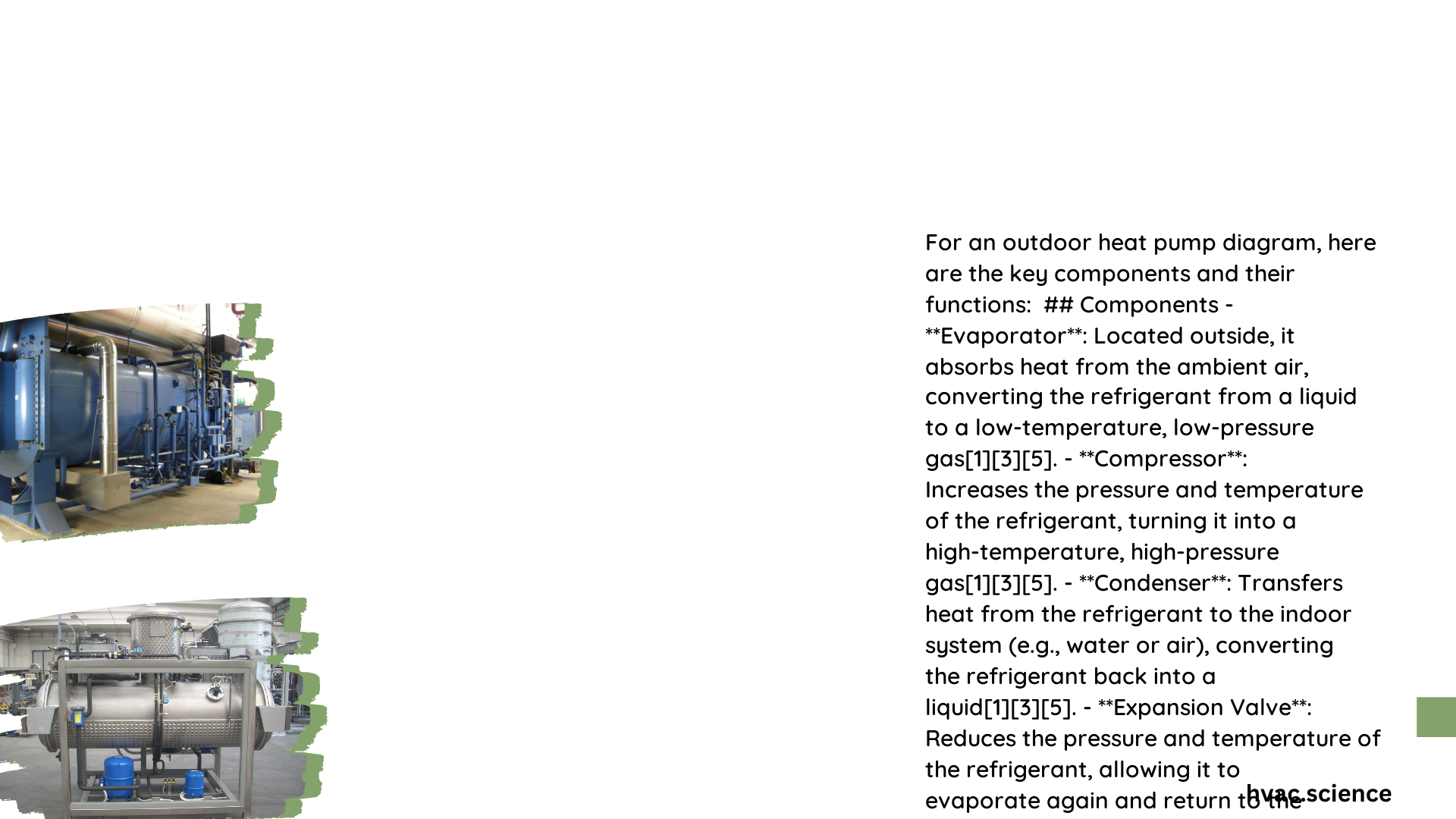An outdoor heat pump diagram provides a critical visual representation of complex thermal transfer mechanisms, revealing intricate interactions between refrigerant, compressor, evaporator, and condenser components. This comprehensive guide deconstructs the technical architecture of outdoor heat pump systems, offering engineers, technicians, and homeowners profound insights into their operational dynamics and structural configurations.
What Are the Primary Components in an Outdoor Heat Pump?
Evaporator: Heat Absorption Mechanism
The evaporator represents the initial stage of heat transfer in an outdoor heat pump system. Key characteristics include:
- Aluminum or copper coil construction
- Fin-based design maximizing surface area
- Temperature range: -10°C to 25°C
- Refrigerant phase transition from liquid to gas
Evaporator Performance Metrics
| Parameter | Typical Value |
|---|---|
| Material | Copper/Aluminum |
| Fin Density | 12-18 fins/inch |
| Heat Transfer Coefficient | 50-100 W/m²K |
Compressor: Pressure and Temperature Transformation
Compressors play a pivotal role in heat pump thermodynamic cycles. They:
- Increase refrigerant pressure
- Elevate refrigerant temperature
- Convert low-pressure gas into high-pressure, high-temperature gas
- Consume electrical energy to drive the cycle
Condenser: Heat Release Mechanism
The condenser facilitates heat transfer from the high-pressure refrigerant to the target medium:
- Transfers thermal energy to water or air
- Converts high-pressure gas back to liquid state
- Typically constructed with copper tubing
- Includes integrated heat exchanger design
Expansion Valve: Pressure Reduction System
Critical for refrigerant state management:
- Reduces refrigerant pressure
- Enables rapid temperature drop
- Controls refrigerant flow rate
- Maintains system efficiency
How to Install an Outdoor Heat Pump?

Site Selection Criteria
- Level ground surface
- Minimum 12-inch clearance around unit
- Protection from direct wind exposure
- Accessible for maintenance
- Away from potential debris accumulation
Installation Steps
- Mounting: Use vibration-dampening pad
- Piping: Connect refrigerant lines
- Electrical: Ensure proper voltage compatibility
- Testing: Verify system performance parameters
What Are Advanced Integration Strategies?
Solar Hybrid Configuration
- Photovoltaic panels powering heat pump
- Battery storage integration
- Smart energy management systems
- Optimized renewable energy utilization
Performance Optimization Techniques
- Predictive maintenance algorithms
- Real-time efficiency monitoring
- Adaptive temperature control
- Machine learning-based optimization
Technical Specifications and Considerations
Efficiency Metrics
- Coefficient of Performance (COP): 3-5
- Seasonal Performance Factor (SPF): 2.5-4.5
- Temperature Operating Range: -15°C to 40°C
Material Considerations
- Corrosion-resistant components
- High thermal conductivity materials
- Weather-resistant external casing
Maintenance and Longevity
Recommended Practices
- Annual professional inspection
- Regular filter cleaning
- Refrigerant level verification
- Electrical connection assessment
Conclusion
An outdoor heat pump diagram reveals a sophisticated thermal engineering system designed for maximum energy transfer efficiency. Understanding its intricate components and operational principles enables optimal system design and performance.
